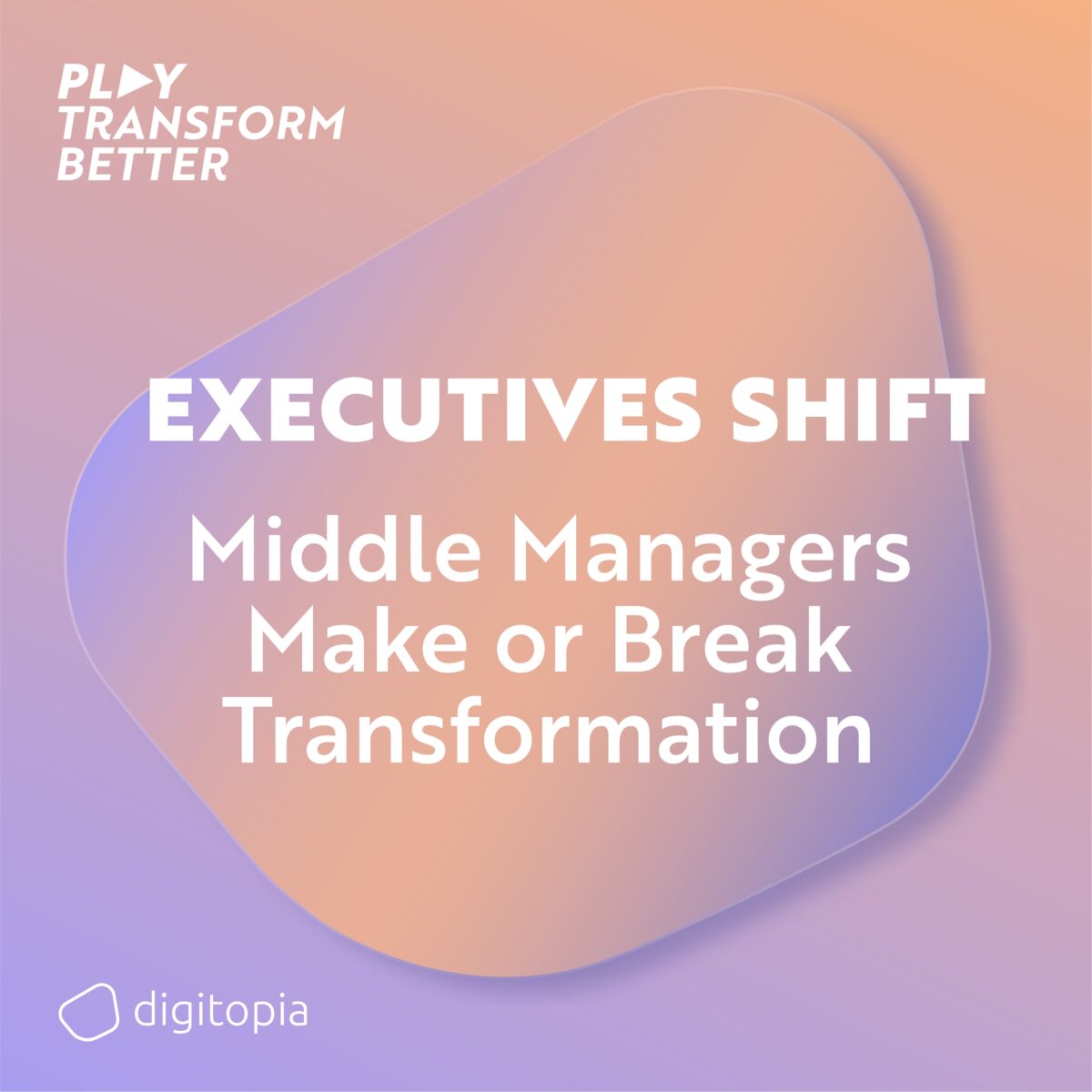
Listen on
Episode Description
We’re jumping right in today to explore a critical, often misunderstood part of digital transformation: the middle layer.
It’s common to blame transformation failures on poor strategy or clunky technology. But what if the real reason sits quietly in the middle — right where strategy meets execution?
That’s where middle managers live. And that’s where things often fall apart.
This episode is anchored in Digitopia’s Digital Transformation Guide, which makes a compelling case: middle managers aren’t blockers. They’re the heart of change. But only if we empower them properly.
Let’s get into it.
The Real Point of Failure
Too often, we think transformation fails at the top — maybe the strategy lacked clarity. Or at the front lines — maybe employees resisted the change.
But according to the research, failure tends to happen in the middle. In that tense space between big ideas and daily operations.
This is where middle managers operate. They’re not just messengers. They’re the translators of vision into action — the connective tissue that turns ambition into progress.
Alignment Isn’t a Town Hall
We talk a lot about “alignment” in business. But real alignment isn’t about sending an email blast or hosting a town hall.
It’s about shared understanding. Shared priorities. Shared ownership.
And middle managers are the ones holding that alignment together.
Without them, strategy stays stuck in PowerPoint slides. Change stays theoretical. And transformation stays unfinished.
The Credibility Gap
Here’s one big reason transformation stalls: middle managers are left out of the planning process.
They’re handed a strategy they didn’t help shape. They’re expected to lead a change they didn’t design. And they’re judged on outcomes they weren’t part of defining.
This creates what Digitopia calls a “credibility gap.” Frontline teams can sense when their managers aren’t fully bought in — or even fully informed.
And that’s when execution starts to quietly slow down.
The Impossible Balancing Act
Middle managers are asked to deliver results using yesterday’s metrics — while changing everything about how the work is done.
They’re stuck balancing short-term targets with long-term transformation. They have to keep the business running while disrupting it at the same time.
And structurally? They’re working with outdated systems, skeptical teams, and KPIs that reward stability over change.
It’s not resistance. It’s survival.
Culture is Behavior, Not Words
Let’s talk culture.
Transformation is more than technology. It’s about behavior. And behavior is shaped by what’s rewarded — not what’s said.
If middle managers are being measured on old metrics, they’ll default to the old ways. No matter how many speeches the CEO gives about innovation.
Culture gets set by what your manager does. Not what your CEO says.
Five Strategic Moves for Leaders
So how do we fix this? How do we turn middle managers into transformation leaders?
The Digital Transformation Guide outlines five concrete moves:
Involve Them Early
Bring them into the planning stage. Ask for their input on operational bottlenecks, cultural resistance, and practical constraints.
Redefine Their KPIs
Stop measuring them on cost and stability alone. Introduce metrics tied to innovation, adoption, and capability building.
Create Structured Alignment Rituals
Don’t rely on top-down broadcasts. Use shared dashboards, cross-functional updates, and maturity assessments to build trust and consistency.
Invest in Their Development
Middle managers often receive the least training in change leadership. Equip them with tools for communication, coaching, and conflict resolution.
Celebrate and Amplify Their Success
Make internal heroes out of the managers who drive transformation. Visibility breeds ownership.
The Final Thought
Here’s the core truth:
Transformation only becomes real when it becomes operational.
That happens not in boardrooms, but in team meetings. Not on slides, but in workflows. Not in strategy decks, but in performance reviews.
And that’s the space where middle managers operate.
Let’s stop calling them blockers.
They’re the activators — if we choose to support them.




